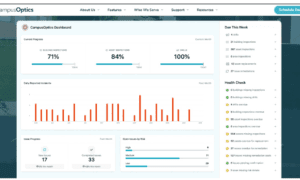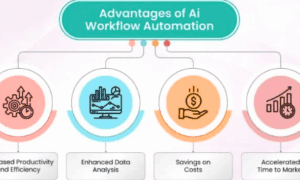Project management has evolved rapidly over the last few decades. Traditional approaches, while structured, often struggled to keep pace with the dynamic needs of modern industries. Today, businesses face fast-changing markets, shifting consumer demands, and the constant push for innovation. In this environment, Agile is a modern model that has redefined how teams collaborate, adapt, and deliver results. By focusing on flexibility, continuous improvement, and customer value, Agile has emerged as the future of project management. This article explores how Agile is shaping project management practices, its impact across industries, and why organizations are increasingly adopting it to stay competitive.
The Evolution of Project Management
To understand Agile’s significance, it’s important to revisit the traditional approaches that preceded it. For decades, project management relied on linear methodologies like the Waterfall model. These methods emphasized detailed planning, rigid timelines, and step-by-step execution. While effective in industries like construction or manufacturing, they often fell short in fast-moving sectors like technology, where change is constant.
Over time, businesses realized the limitations of these methods. Projects ran over budget, missed deadlines, or failed to deliver what customers truly needed. This gap between rigid planning and real-world challenges paved the way for Agile. By prioritizing adaptability, collaboration, and incremental delivery, Agile directly addressed the shortcomings of earlier models. Its rise was not just a shift in tools but a fundamental change in project management philosophy.
Core Principles of Agile Project Management
Agile is more than just a methodology; it is a mindset guided by core principles. At its heart, Agile emphasizes:
- Customer collaboration over contract negotiation – Projects are built around constant communication with clients to ensure the final product aligns with their evolving needs.
- Responding to change over following a fixed plan – Agile accepts that requirements may shift and encourages flexibility rather than rigidity.
- Individuals and interactions over processes and tools – Agile values people, teamwork, and communication above strict reliance on tools.
- Working solutions over extensive documentation – Progress is measured by usable outcomes rather than lengthy reports.
These principles highlight Agile’s departure from traditional project management, focusing on adaptability and value creation. They empower teams to move quickly, make informed decisions, and deliver outcomes that matter to stakeholders.
Agile Methodologies in Action
Agile’s principles are brought to life through various methodologies, each designed to suit different organizational needs. Some of the most widely used frameworks include:
Scrum: Perhaps the most popular Agile framework, Scrum organizes work into short cycles called sprints. Teams meet daily to track progress, identify roadblocks, and adjust priorities. This iterative process keeps projects moving while maintaining flexibility.
Kanban: Based on visual workflow management, Kanban uses boards to track tasks. It helps teams manage workload, spot bottlenecks, and maintain steady progress.
Lean: Rooted in efficiency, Lean focuses on minimizing waste and maximizing value. It emphasizes continuous improvement and resource optimization.
These frameworks are adaptable, allowing businesses to choose the model that best fits their culture, industry, and goals. What unites them is a shared commitment to flexibility, communication, and delivering incremental value.
The Benefits of Agile for Modern Organizations
Adopting Agile brings a wide range of benefits that directly impact productivity, team morale, and overall business success. Some of the most notable advantages include:
Enhanced Flexibility: Agile enables teams to adjust plans quickly in response to market changes, ensuring relevance and competitiveness.
Faster Delivery: By working in short iterations, organizations can deliver functional solutions early and frequently, reducing time-to-market.
Improved Collaboration: Agile emphasizes teamwork, with stakeholders actively involved in shaping the project’s direction.
Higher Customer Satisfaction: Because Agile prioritizes user feedback, the end product often aligns more closely with customer expectations.
Reduced Risk: Continuous testing and incremental progress help identify potential issues early, minimizing large-scale project failures.
These benefits have made Agile the preferred approach in industries that thrive on innovation, including software development, marketing, product design, and even healthcare.
Agile Beyond IT: Expanding Into New Industries
While Agile originated in the software development world, it has quickly expanded into other sectors. Marketing teams now use Agile to run campaigns that adapt to audience responses. Healthcare organizations apply Agile principles to improve patient care through iterative solutions and collaborative practices. Even manufacturing, once considered rigid, has embraced Agile-inspired Lean practices to increase efficiency and innovation.
This expansion highlights Agile’s versatility. It is not limited to one industry but rather offers a framework adaptable to diverse business environments. The common thread across these sectors is the demand for adaptability, innovation, and continuous value delivery—qualities at the core of Agile.
Challenges in Adopting Agile
Despite its benefits, Agile adoption is not without challenges. Many organizations struggle to shift from hierarchical structures to the collaborative culture Agile demands. Resistance to change, lack of training, and misunderstanding of Agile principles can hinder its success.
Additionally, scaling Agile across large organizations often requires significant adjustments. Frameworks like SAFe (Scaled Agile Framework) have been developed to address these challenges, helping enterprises implement Agile practices at scale. However, the transition still requires strong leadership, cultural alignment, and consistent commitment.
Overcoming these barriers involves educating teams, investing in training, and embracing Agile as more than just a process—it must become part of an organization’s culture and mindset.
The Future of Project Management with Agile
Looking ahead, Agile is poised to remain at the forefront of project management. As industries become increasingly digital, customer-centric, and fast-paced, the demand for adaptability will only grow. Agile’s focus on collaboration and continuous improvement makes it well-suited for this future.
Moreover, Agile is evolving alongside technology. Artificial intelligence, automation, and advanced data analytics are being integrated into Agile practices, making them even more efficient. For example, AI tools can analyze project risks, predict delays, or optimize workflows, giving teams deeper insights and stronger decision-making power.
In this future, Agile is not just a methodology but a foundation for innovation. It enables businesses to embrace change, thrive in uncertainty, and continuously deliver value in an ever-changing landscape.
Conclusion
Agile has transformed project management from a rigid, linear approach into a flexible, collaborative, and customer-focused practice. Its principles empower teams to adapt, communicate, and deliver results that align with real-world demands. While challenges remain in adoption, the benefits of Agile far outweigh the obstacles, making it a cornerstone of modern project management.
As industries continue to evolve, Agile will play an even greater role in shaping the future of how projects are planned and executed. It is not just a trend but a sustainable model that aligns with the realities of today’s business world. Organizations that embrace Agile now are positioning themselves for long-term success in a rapidly changing marketplace.



































